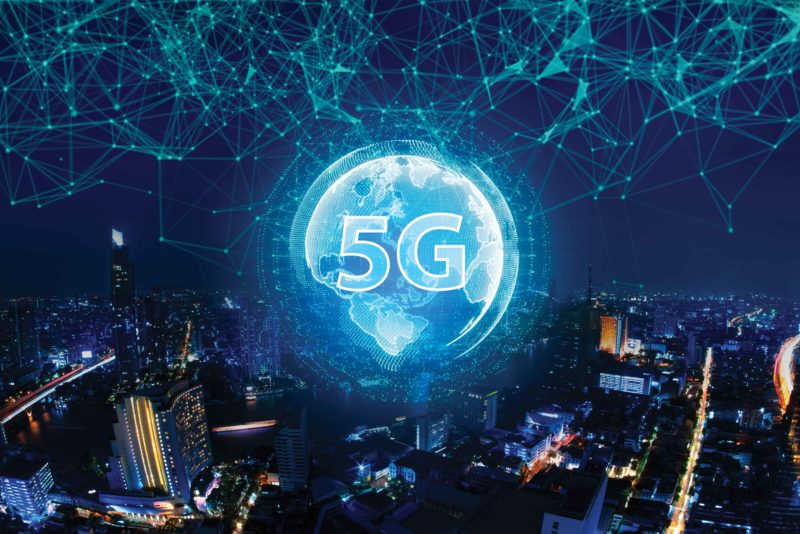Latest News

While telcos and cellular operators plan to pitch next-generation 5G services to municipal government officials and business owners from large, densely-populated cities, satellite operators such as SES will be using next week’s DC5G Conference as a platform to connect roughly 3 billion people on the other side of the digital divide. According to SES Networks’ Vice President of Telco/MNO Data Solutions, Karl Horne, these 3 billion unconnected consumers and businesses combine to create a market worth $88 billion, or, the 5th largest MNO in the entire world.
DC5G will host hundreds of city, state, and federal government officials, wireless service providers, enterprise end-users, and investors for a two-day conference on Monday, November 4th and Tuesday, November 5th at the Ritz-Carlton Pentagon City in Arlington, Va. DC5G Chairman Jeffrey Hill explained that this year’s program was designed to give attendees clear actions they can take to build, adopt and/or enable the next-generation wireless services they need.
“While 5G services have already rolled out in nearly 50 cities around the world, there’s still some confusion as to how it functions as both a consumer and public service,” says Hill. “We have a lot of city government attendees who are coming to DC5G to learn about those public services. I suspect that some of these city officials, who come from smaller, more remote regions, are looking for services that don’t necessarily require 5G. I think it’s smart that some of our speakers will be addressing the digital divide and providing a broader definition of ‘smart cities.’ And, you’ll notice that our federal government speakers and attendees see 5G and digital divide plans as part of the same overall strategy.”
DC5G aims to help attendees create long-term tactical plans to harness 5G and next-gen wireless technology by providing them with a “5G Action Plan,” a structured note-taking form that is, literally, a list of questions: What Exactly do I need from a 5G Network? What are the goals? Which devices will be running on this network? What do I need to build and who is going to pay for it? Which Legal/Regulatory/Privacy Issues do I need to consider? How will I manage and protect this network? Who is going to build my network?
“Our goal with this conference is to answer all of those questions,” said Hill. “If attendees can’t take detailed notes under each of these questions, then we missed the mark. So, in regards to the issue of 5G vs. digital divide, the question ‘What Exactly Do I Need from a 5G Network?’ could yield an answer that the attendee doesn’t actually need 5G right now at this moment. Rather, they need 4G, 4G/LTE services today and 5G in a few years, depending on population and business growth. This is why we built in a digital divide / smart city component to this program.”
That said, a majority of DC5G focuses on 5G, and includes a parade of case study presentations from businesses, cities, and organizations that are actually utilizing 5G, including: Ford Motor Company; the City of Dublin, Ireland; Harvard University; Bringham and Women’s Hospital in Boston; and the U.S. Department of Defense. Along with SES, several service and technology providers will be detailing 5G and next-gen wireless use cases ranging from automated driving to smart building health services, including from Verizon, Sprint, AT&T, Crown Castle, Qualcomm, Nokia, Hitachi, and Samsung.
Satellite operators won’t be limited to the fringes of 5G and remote connectivity. Hill said that nearly everyone involved with 5G services, including regulators at the FCC, acknowledges that satellite connectivity has to serve as crucial part of the hybrid network that powers 5G. “That’s because the physical infrastructure is too expensive for any one company to build on their own,” said Hill. “Fiber installation costs per mile make it prohibitive for large swaths of the United States. Considering that the U.S. government is taking a private sector-driven approach to 5G and not subsidizing massive infrastructure build out projects, providers within the larger telecommunications industry will have to collaborate and combine services to fully realize what 5G can do. It’s important for satellite companies to participate in events like DC5G, because they have to realize that they’re not in a fight to prevent 5G. They’re in a fight to power 5G. There is a real opportunity for satellite to take a leadership role.”
DC5G 2019 will feature keynotes from AT&T Vice President of Federal Hank Hultquist, Kilroy Realty Senior Vice President of Sustainability Sara Neff, and Consumer Technology Association (CTA) President & CEO Gary Shapiro, author of the New York Times’ best-seller “Ninja Future.”
Get the latest Via Satellite news!
Subscribe Now